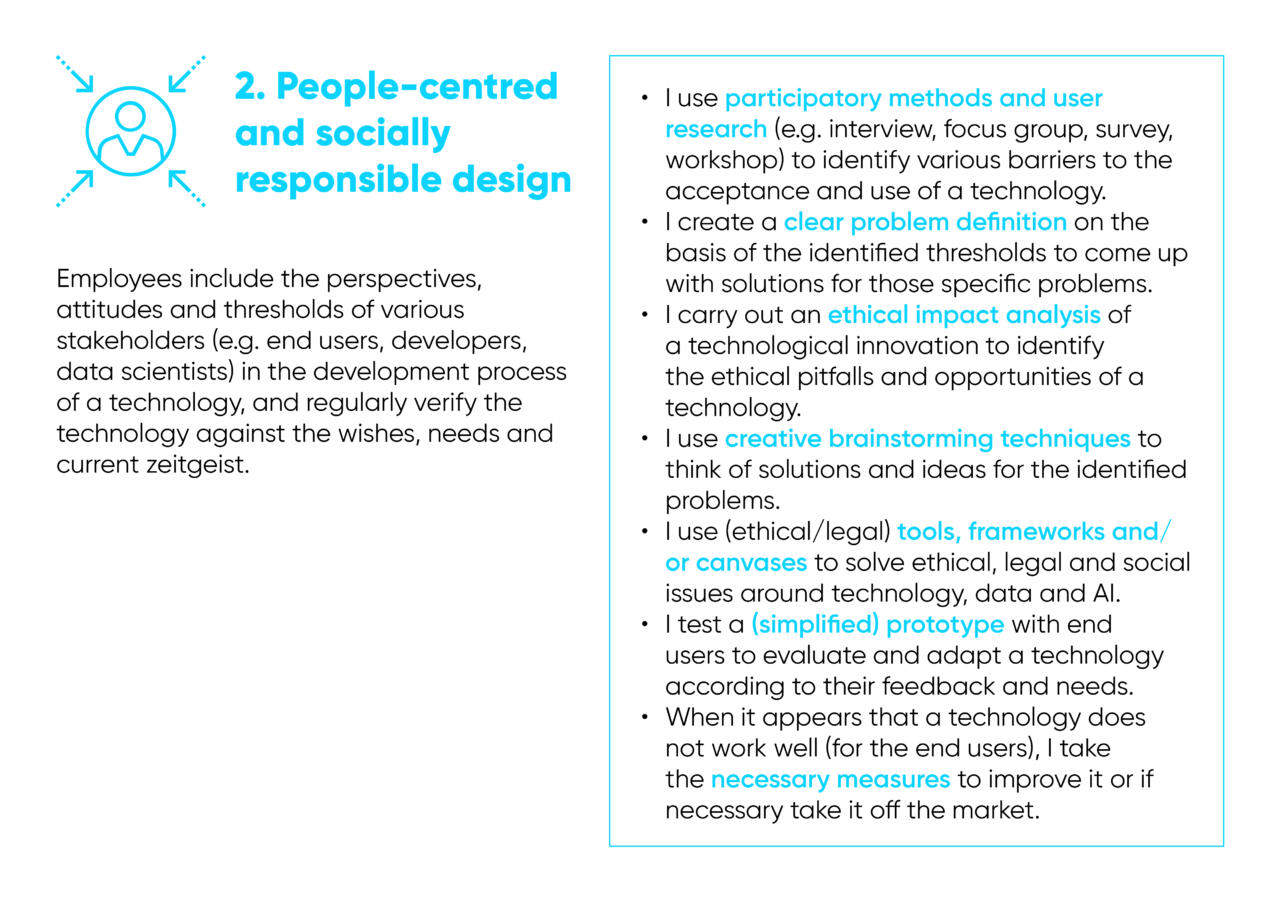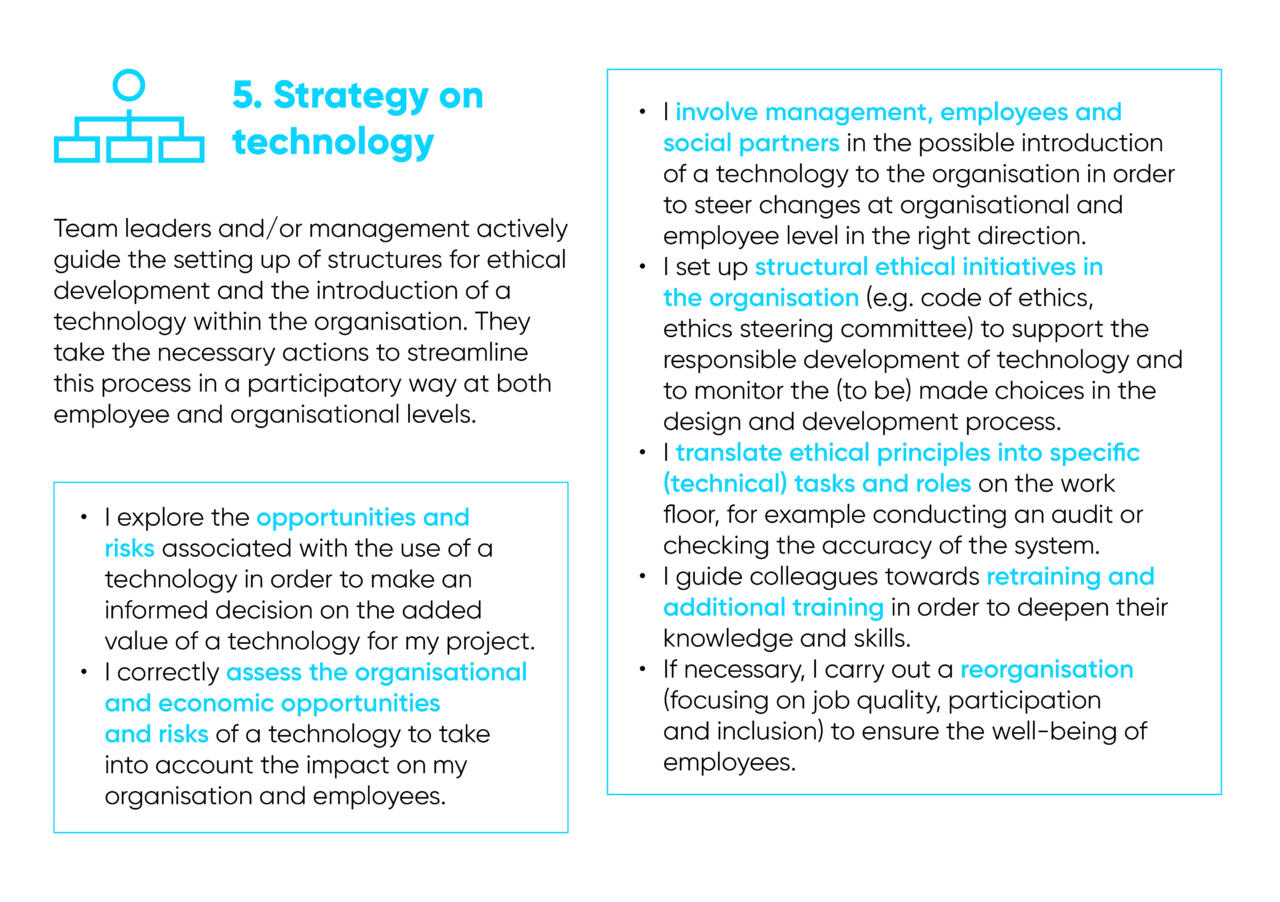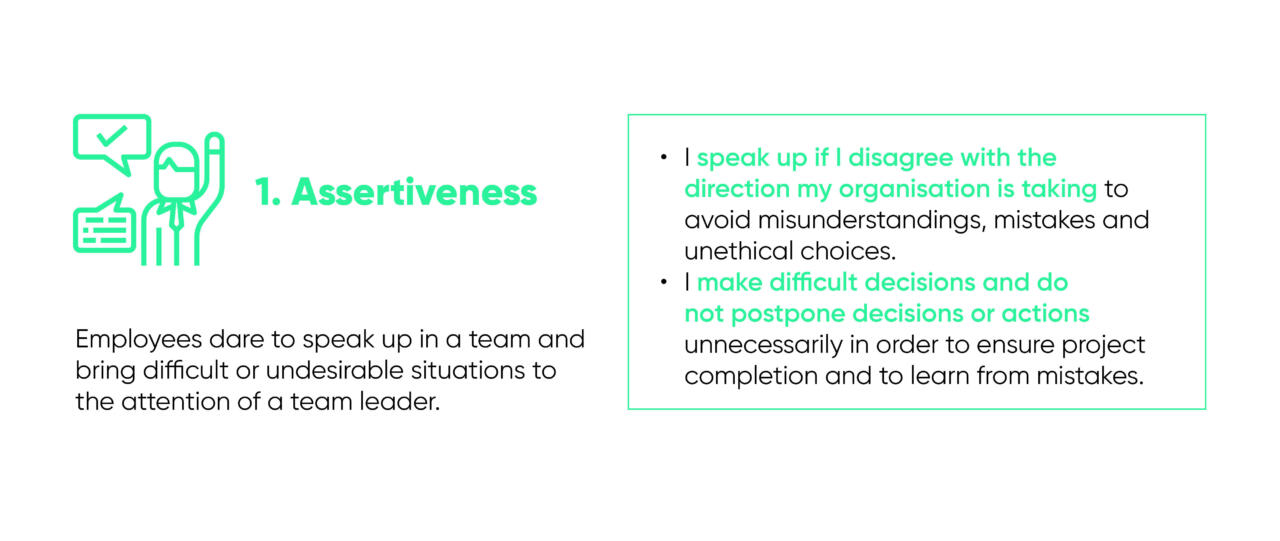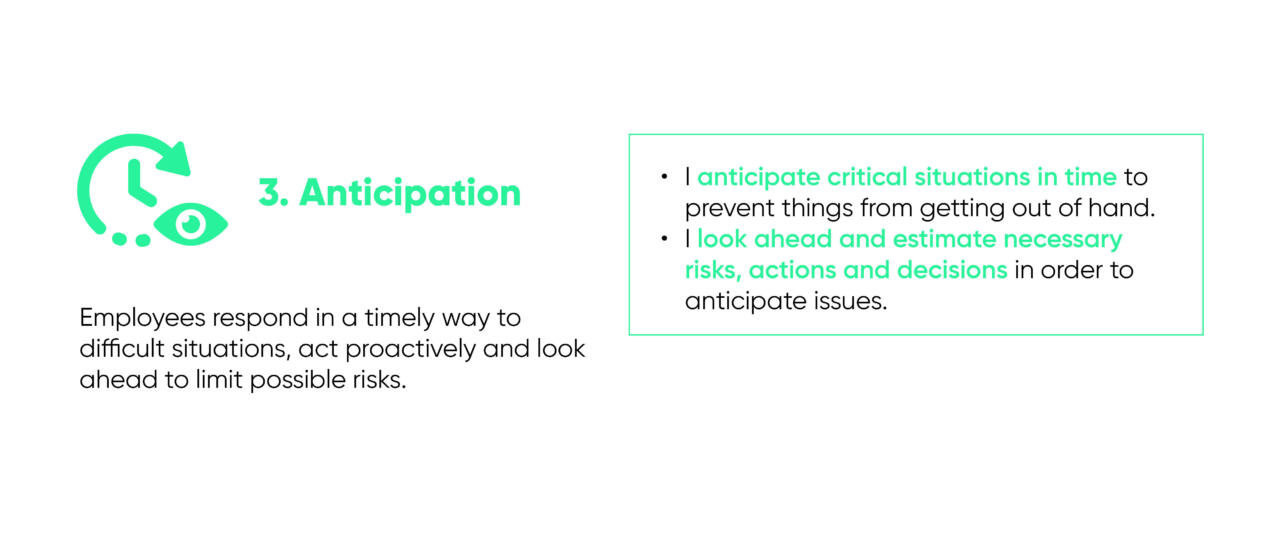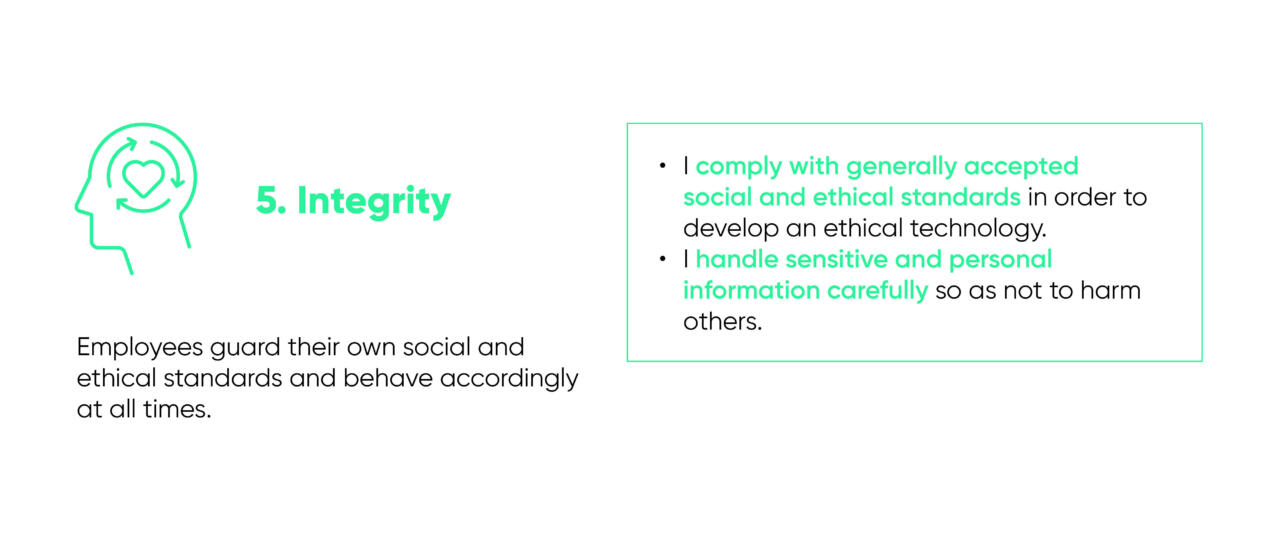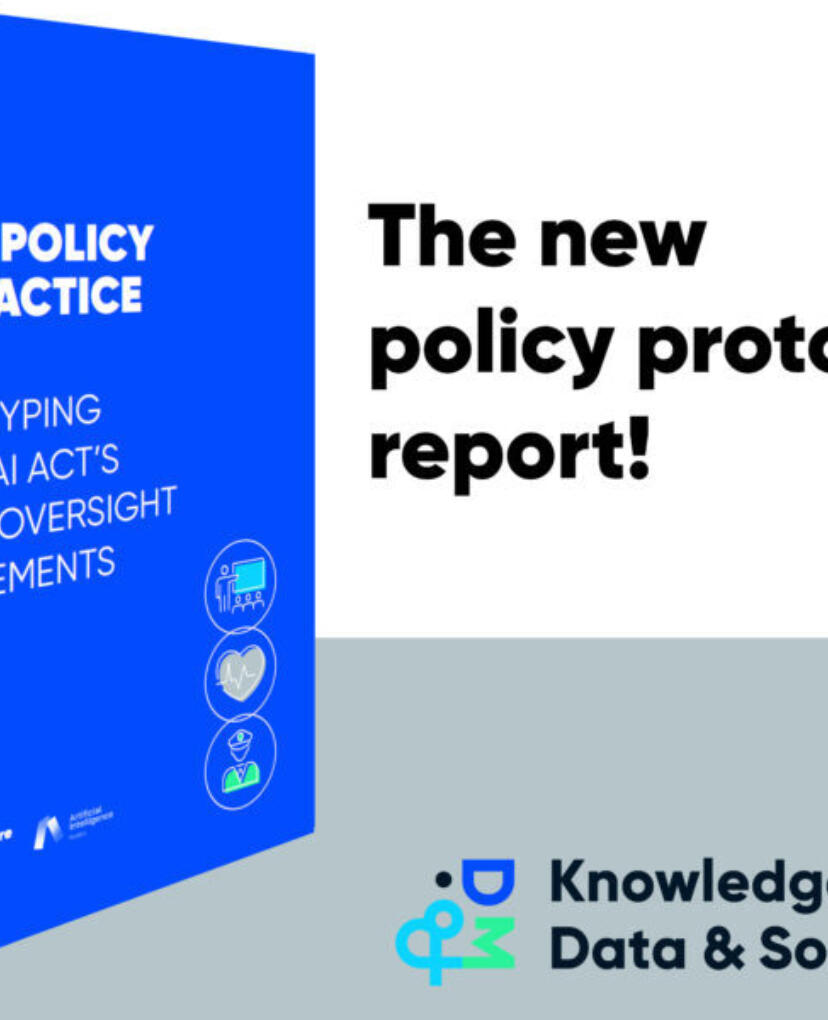Which competencies does a team need to develop responsible data-driven systems and artificial intelligence (AI)? The competency model 'Skilfully developing data-driven systems' helps you answer this question. It explains the necessary knowledge, skills and attitudes of employees who design and develop technological innovations. Team leader(s) and management also influence the development process, which is why the competency model also includes competencies for them.







